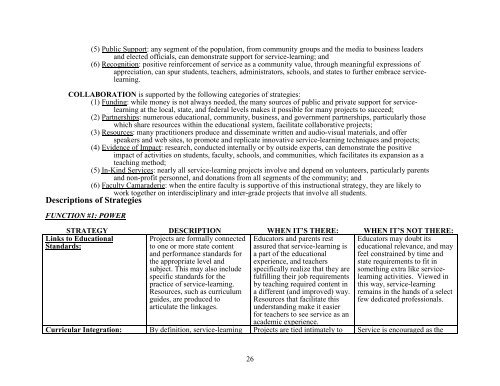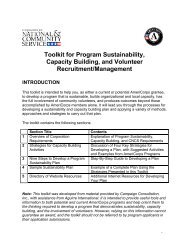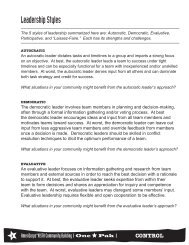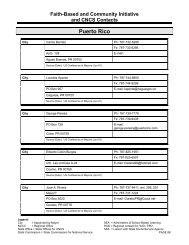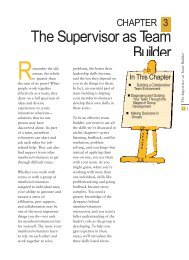MAKE IT LAST FOREVER: THE ... - National Service Resource Center
MAKE IT LAST FOREVER: THE ... - National Service Resource Center
MAKE IT LAST FOREVER: THE ... - National Service Resource Center
Create successful ePaper yourself
Turn your PDF publications into a flip-book with our unique Google optimized e-Paper software.
(5) Public Support: any segment of the population, from community groups and the media to business leaders<br />
and elected officials, can demonstrate support for service-learning; and<br />
(6) Recognition: positive reinforcement of service as a community value, through meaningful expressions of<br />
appreciation, can spur students, teachers, administrators, schools, and states to further embrace servicelearning.<br />
COLLABORATION is supported by the following categories of strategies:<br />
(1) Funding: while money is not always needed, the many sources of public and private support for servicelearning<br />
at the local, state, and federal levels makes it possible for many projects to succeed;<br />
(2) Partnerships: numerous educational, community, business, and government partnerships, particularly those<br />
which share resources within the educational system, facilitate collaborative projects;<br />
(3) <strong>Resource</strong>s: many practitioners produce and disseminate written and audio-visual materials, and offer<br />
speakers and web sites, to promote and replicate innovative service-learning techniques and projects;<br />
(4) Evidence of Impact: research, conducted internally or by outside experts, can demonstrate the positive<br />
impact of activities on students, faculty, schools, and communities, which facilitates its expansion as a<br />
teaching method;<br />
(5) In-Kind <strong>Service</strong>s: nearly all service-learning projects involve and depend on volunteers, particularly parents<br />
and non-profit personnel, and donations from all segments of the community; and<br />
(6) Faculty Camaraderie: when the entire faculty is supportive of this instructional strategy, they are likely to<br />
work together on interdisciplinary and inter-grade projects that involve all students.<br />
Descriptions of Strategies<br />
FUNCTION #1: POWER<br />
STRATEGY DESCRIPTION WHEN <strong>IT</strong>’S <strong>THE</strong>RE: WHEN <strong>IT</strong>’S NOT <strong>THE</strong>RE:<br />
Links to Educational<br />
Standards:<br />
Projects are formally connected<br />
to one or more state content<br />
and performance standards for<br />
the appropriate level and<br />
subject. This may also include<br />
specific standards for the<br />
practice of service-learning.<br />
<strong>Resource</strong>s, such as curriculum<br />
guides, are produced to<br />
articulate the linkages.<br />
Educators and parents rest<br />
assured that service-learning is<br />
a part of the educational<br />
experience, and teachers<br />
specifically realize that they are<br />
fulfilling their job requirements<br />
by teaching required content in<br />
a different (and improved) way.<br />
<strong>Resource</strong>s that facilitate this<br />
understanding make it easier<br />
for teachers to see service as an<br />
academic experience.<br />
Educators may doubt its<br />
educational relevance, and may<br />
feel constrained by time and<br />
state requirements to fit in<br />
something extra like servicelearning<br />
activities. Viewed in<br />
this way, service-learning<br />
remains in the hands of a select<br />
few dedicated professionals.<br />
Curricular Integration: By definition, service-learning Projects are tied intimately to <strong>Service</strong> is encouraged as the<br />
26


